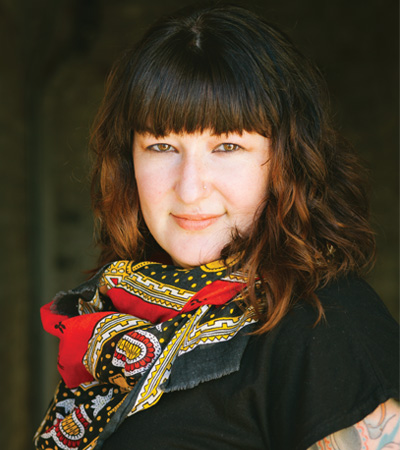Shannon Tucker was working as a baker at Tartine Bakery, moonlighting as a bartender, when Chad Robertson asked her if she’d be interested in tending bar when he opened Bar Tartine. She said she would, and spent two years apprenticing with Steve Kopp, who was then buying wine for Quince, Zuni and Bar Tartine. She later worked for a number of years at Bacar, then came to Foreign Cinema, shifting her focus from wine to operations. When former beverage director Zach Pace left the restaurant in early 2012, she took over the wine program, and has since considerably expanded the restaurant’s wine offerings.


On selling wine in the Mission
The Mission is changing; there’s a different clientele. We’re in the midst of a fairly robust boom in San Francisco. People have a lot of money to spend in relation the past three years. Also, cocktails were such a thing for the last four or five years, and people are starting to realize that you don’t have to drink vodka through your whole dinner. I think that wine is having a bit of a renaissance with young people. I’m seeing more people around my age—I’m in my mid-30s—who are more open to it, and will let you open stuff for them. Even when I worked in New York or at Bacar, it was more a lot of expense accounts. Now it seems that people have a more personal investment and interest, rather than somebody buying a bottle of Silver Oak on the company Amex.
[On the dinner menu, Tucker highlights a particular wine available by the glass and 500 ml carafe, along with a dish to go with it.] We often do it because it will go really phenomenally with something that we’re offering that night, often something that’s new on the menu. Or it’s a wine that we’re excited about that might get lost on the list. It’s unusual for us to offer California pinot noir or a Napa cabernet. More like cru Beaujolais or something from southern Italy. We’ll often change it every day.
At the beginning of January, we did Champagne. I like to drink Champagne in January because it really wakes you up after all the red wine at Christmas. For warmer evenings, we also did southern Italian whites recently. It depends on weather. It hasn’t been that cold lately, so we’ve been doing quite a few whites and lighter reds.
It’s basically what I would like to eat and drink if I sat down.
On selling non-Champagne sparkling wines
We’ve always sold a lot of bubbles; the raw bar is definitely a factor, I think. Also brunch!
The Champalou Brut [a Vouvray and her top-selling wine], that’s a wine that the staff is familiar with and really likes, and it’s at a really good price point. It’s a versatile wine, as an aperitif to start off brunch or dinner. We also do quite a few weddings—I would definitely attribute the Iron Horse [the Wedding Cuvée] being on there to weddings.
The Murgo [Brut Rosé from Etna, her top by-the-glass wine], that was on by the glass for a while. It was a wine that I tasted on my own and said: I think this wine’s really interesting, and more savory than a lots of rosés; it has a bit of a volcanic element to it. I thought: Either the staff will be really into it and we’ll sell a lot, or they won’t and I’ll have to find another wine. And they got really behind it. It’s brought it by North Berkeley Imports, and I think we buy most of what they bring in.
On a memorable sale
There was a couple that came in a few weeks ago, from Santa Cruz. They said they drank mostly domestic wines but were interested in trying something different. They said they liked Santa Cruz Mountains cabernet, which is savory and high elevation. We have some older Chinon, and I said: This might be something you would find very interesting. It was a 1990 Olga Raffault Les Picasses, with some secondary characteristics but still approachable. And it was cool, because they were like: This is eye-opening. They were probably in their 30s, I would guess, and a lot of people just aren’t drinking older wines because they’re just not around and they’re expensive. This was just over $100 dollars a bottle, and it was a library release that came directly from the winery a few years ago, so the wine was in really good condition. They ended up asking for recommendations for other places where they could find wines like this: I suggested Kermit Lynch in Berkeley, since they bring in a fair amount of Chinon, or Soif [Wine Bar] in Santa Cruz since they live in Santa Cruz.
Longtime senior editor at Wine & Spirits magazine, Luke now works for the Stanford Technology Ventures Program.
















